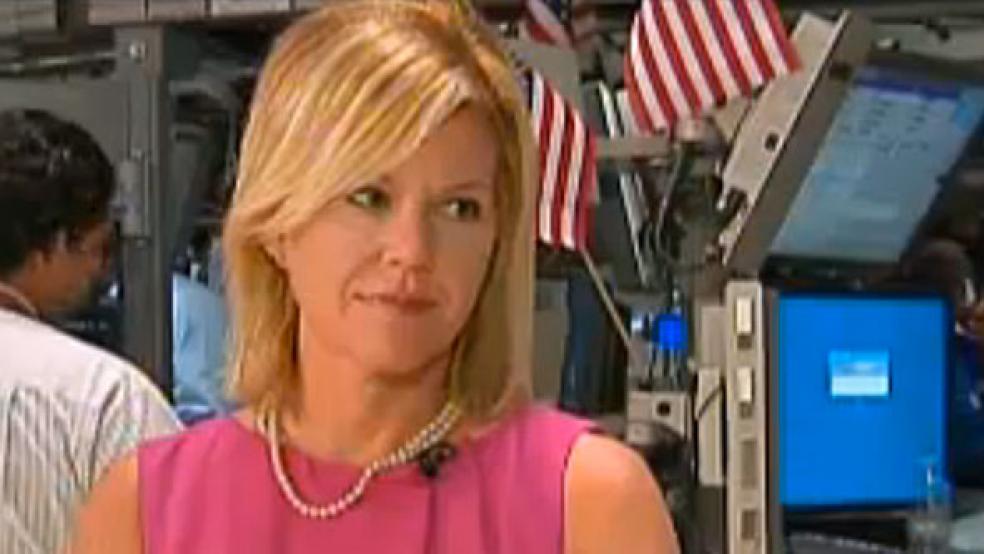Meredith Whitney is wrong. On CNBC yesterday, the founder and CEO of Meredith Whitney Advisory Group, said: “I think you’re getting increasing signs that we’re at risk for a double dip. Our GDP number on Friday was an indication that states and local governments, which make up 12 percent of GDP, are really pulling back. We’re certainly at a double dip of housing. That puts enormous pressure on the economy.”
She’s right about the pressure, but fears of a double-dip recession have dogged this economic recovery from the get-go. Now, after downward revisions to GDP growth on top of the slowdown in payrolls and other sour-looking data, the fears are back bigtime.
But how much should we really worry?
It’s true that most economists are revising downward their growth forecasts, and the risks are to the downside. Yet all believe growth will continue and that the second half will show at least modest improvement over the first. Barclays Capital now looks for growth in the 2.0-to-2.5 percent range in the second half, while JPMorgan expects a pace between 2.5-to-3.0 percent.
“If asked to give the probability for recession over the next year, I would put those odds between 1-and-4 and 1-and-3,” says Sam Bullard, a senior economist at Wells Fargo.
Economists say much of the recent data tell us more about past weakness than future prospects. The soft first half was the result of higher gas prices hitting consumers, supply disruptions depressing auto output and sales, and business uncertainty caused by default brinkmanship in Washington. All those drags on the economy are now lifting.
Start with the GDP report. The number that caused all the handwringing was the downward revision to first-quarter growth, from 1.9 percent to 0.4 percent. Without that, the second-quarter GDP increase of 1.3 percent, which was about a half-percent below expectations, would have been disappointing but taken in stride.
A closer look at the new first-quarter GDP data, however, reveals that two-thirds of the downward revision reflected sharply lower inventory growth. That’s actually a good thing amid weak demand because it lessens the chances of cutbacks in output and jobs later on. The rest of the revision reflected sharply higher imports. That’s hardly a sign of weak domestic spending, but it resulted in a larger trade deficit that subtracted from GDP. Overall domestic demand was weak, up only 0.4%, but it was no weaker than first reported.
In coming months, all eyes will be on consumers and employment, which were the two most important areas of weakness in the first half. And there is reason for optimism. Much of the Washington uncertainty that had been worrying the business community—and likely depressing hiring—is now abating. And the recent dip in weekly unemployment claims also offers hope for better job growth. “The debt deal we had today will make the double-dip recession less likely,” John Steele Gordon, economic historian and author of An Empire of Wealth: The Epic History of American Economic Power, told The Fiscal Times.
Tuesday’s report on July car sales show a solid pickup in the annual sales rate, to 12.2 million from 11.4 million in June. Oil prices are off their highs earlier this year, as are gasoline prices. Overall inflation has come down, giving incomes more buying power. Plus, home prices are stabilizing, and outside of mortgage lending, consumer borrowing is picking up.
Certainly the loss of fiscal stimulus in the coming year will be felt as past programs expire, but the now-completed deficit deal will not create much additional drag. About $17 billion in cuts were already on the books for Fiscal Year 2012, and the deal adds only about $25 billion for a total of $42 billion in cuts for FY 2012. That’s only about 0.3 percentage points of GDP.
Monetary policy remains extraordinarily accommodative to growth, and the Federal Reserve is now even less likely to begin raising interest rates any time soon, say economists at Barclays Capital, who now expect the Fed to remain on hold all the way through 2012. “At the same time,” says Barclays economist Dean Maki, “the modest improvement in growth that we expect is likely to keep the Fed from launching a new asset purchase program.”
10 Reasons Why There Won’t Be a Double-Dip Recession |
With reporting by Blaire Briody.
More on the chances for a double-dip recession from The Fiscal Times:
U.S. Consumers Lose Confidence: Some Fear Double-Dip Recession
Bernanke Says Fed Prepared to Act if Recovery Stalls
Dismal Jobs Number Fuel Fears of Double-Dip Recession






